| Graber Rogg |
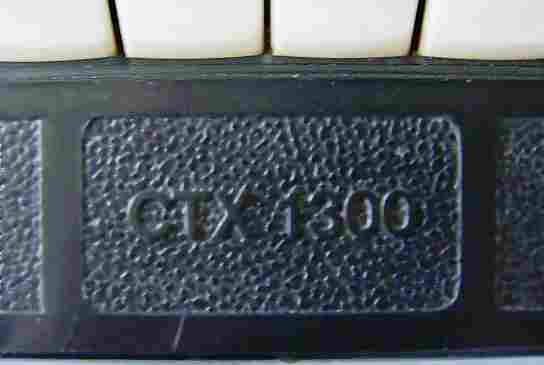
|
 |
reed organ with pressure sensitive keys |
This tablehooter is not an electronic keyboard, but basically a blower operated, keyboard- shaped plastic accordion with 16 single finger chord buttons and a volume slider that controls the air pressure. Great is that it is (at least theoretically) full polyphonic and has pressure sensitive keys for very expressive playability.
 |
 |
A reed organ is a wind instrument consisting of a sealed case in which an electrically operated fan (or bellow) blows into to produce an overpressure. Under each key sits a reed pipe and a closed valve; when the key is pressed, the valve opens to let air escape the case and the resulting air flow makes the corresponding reed vibrate and produce a tone. This is the same mechanism used in the accordion, harmonica, melodica or mouth organ (blues harp), and regarding the size of a mouth organ, you can easily estimate that the often quite huge and bulky case of reed organs is almost completely empty. Complex reed organs can have ranks with multiple reeds per key, those are selectable through tab stops for switching the timbre (like with accordions).
The special feature of the chord organ is a group of chord buttons located to the left of the keyboard. These buttons have each 3 reeds underneath to produce single finger chords (usually) in minor and major. Often these were gladly advertised as "pre- programmed chord buttons" and the like, although they have absolutely nothing to do with digitally programmed preset accompaniments but are simply fixed organ chord tones (one per button) invented upon a time when electronic automatic accompaniments did not exist yet.
Most people still consider chord organs crap, because they sound and behave not at all like a (pipe or electronic) organ, and especially with polyphonic play or reduced volume (controlled by air pressure) the attack rate turns so slow and howls by running out of air, that it severely disturbs fast play. When out of air, high notes even fully fall silent. But when not demanded to be an "organ", they don't really play that bad, because the sound is genuinely more a cross between accordion and saxophone, and the keys respond pressure sensitive and thus permit very expressive modulations. Like with slowly overblowing a saxophone, the volume and pitch ascends while the timbre turns brighter when key pressure slowly increases. The chord buttons permit great grungy morphing cluster sounds by pressing multiple of them together and gently varying the pressure; while at high pressure they distort quite rough and bright, at low pressure their tone turns into a diffuse dull drone.
Chord organs can be recognized by the chord button group and the absence of rhythm and usually only one or very few preset sounds those all resemble an accordion. Usually they contain a quite noisy electric fan and a small mechanical volume slider that can not reduce the volume to zero because it simply gradually opens a bypass valve to reduce the air pressure inside the case.
The sound properties I have described here with the Graber Rogg CTX 1300 generally also exist with other chord organs.
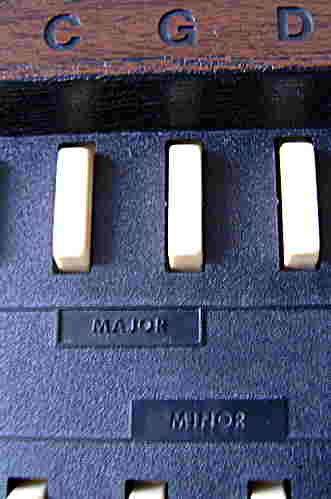 |
 |
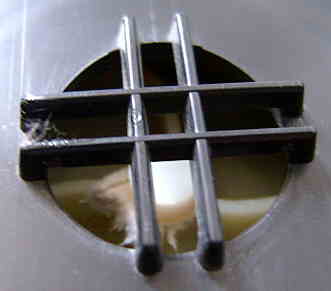 |
 |
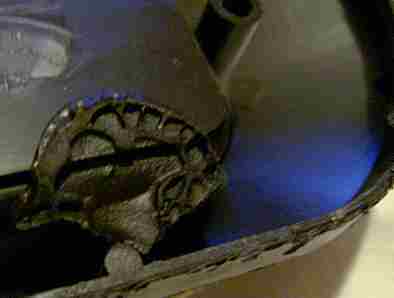 Very
annoying is that the plastic case is welded tight with black plastic goo
at the case rim. My specimen from a flea market was rained into and the
blower motor ran too slow and buzzed by hardened machine oil. Thus I had
to carefully pry open the case centimeter by centimeter using a screw driver
at the welded seam. Beside the rim seam the bottom was also held by plugged
plastic pegs to complicate the task, and at the right seam it was welded
so strongly that the plastic edge cracked when I levered it open.
Very
annoying is that the plastic case is welded tight with black plastic goo
at the case rim. My specimen from a flea market was rained into and the
blower motor ran too slow and buzzed by hardened machine oil. Thus I had
to carefully pry open the case centimeter by centimeter using a screw driver
at the welded seam. Beside the rim seam the bottom was also held by plugged
plastic pegs to complicate the task, and at the right seam it was welded
so strongly that the plastic edge cracked when I levered it open.
 |
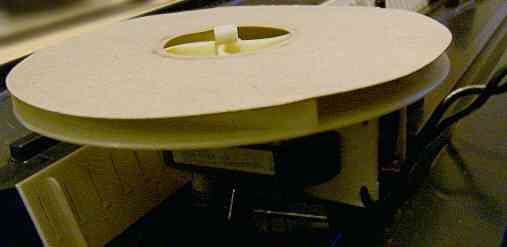
the propeller of this propeller child... |
 |
 ...and
this is the volume control. ...and
this is the volume control. |
 |
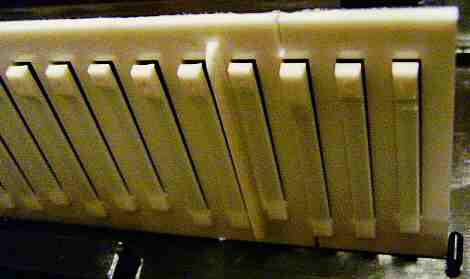 |
This cheap plastic comb is the oscillator unit. |
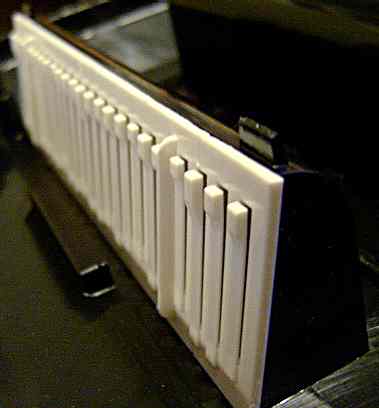 |
I also own a beige Bontempi B9 chord organ (37 fullsize keys, 12 chord buttons), which is bigger, louder and contains more components than the CTX 1300.
Many other companies made chord organs; e.g. some Magnus keyboards
and the Antonelli "Golden Organ" series belong into this
category, but most of them were made by Bontempi (the inventor of
the term "chord organ"?). On eBay you can find tons of these Bontempis
very cheaply. Unfortunately most 3 octave keyboard specimen (especially
Bontempi models) are annoyingly huge and bulky (despite their almost empty
case); the Graber Rogg CTX 1300 with its at least halfway reasonable
size is an exception. Also a version with brown outer case rim and silver
"CTX 1300" logo was made (seen on flea market). By my knowledge no chord
organs with more than 3 octaves were made; only normal reed organs (like
Hohner
Organetta) were made with 4 octaves. Another similar instrument with
more timbres (but no chord buttons) is the Indian portable harmonium (aka
table harmonica or oriental harmonica or oriental harmonium), which has
a wooden case with midsize keys and is usually powered by a hand operated
bellow.
| removal of these screws voids warranty... | ||
 |
||
|
|